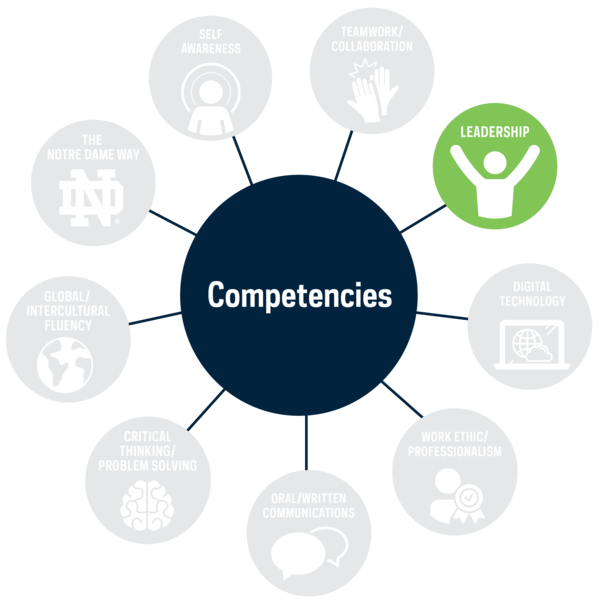Leadership

Leadership
Leadership is the art of motivating a group of people to act toward achieving a common goal, directing workers and colleagues with a strategy to meet the organization's needs. To be effective, a leader has to manage the resources at their disposal. Leadership also involves communicating, inspiring and supervising. A successful leader understands people’s motivations and enlists participation in a way that marries individual needs and interests to the group’s purpose.
Assessing Your Level of Competency
This is the time to really reflect on yourself and where you are at with this competency. Ask yourself the following questions to dive deep into your self-assessment:
- Do I want to be a leader?
- Can I empathize with different types of people?
- Can I change how I communicate depending on the situation?
- Can I think critically and criticize constructively?
- Can I cope with stress?
- Am I flexible when it comes to different tasks?
- Can I handle fear and anxiety?
Building Your Level of Competency
Build on your level of this competency through the following:
- Organize others to complete a task, without manipulation and in a way that is mutually acceptable.
- Strategize and stand back in an attempt to see a wider view of the situation.
- Communicate what is happening - and what you're wanting to happen so others can understand in detail.
- Listen to advice, but be capable of acting without it.
- Develop your team.
- Deal with problems diplomatically and empathetically.
- Consider options without procrastinating and make decisions.
- Be knowledgeable of yourself, strengths, and limitations.
- Understand the position of others in the organizational hierarchy, as well as your position and the responsibilities that come with it.
- Be aware of personal objectives and parameters.
- Be mindful of the people around you; know their wants, opinions, and agendas. Try to understand their relationships with each other.
- Demonstrate initiative by taking on additional responsibilities.
Communicating This Competency
There are many opportunities to communicate your leadership skills to others through your resume, cover letters, interviewing, 30-second professional introduction, networking, etc. Start with statements like the examples below to build upon:
| Accept responsibility | Adapt to new situations | Advise |
| Build teams | Create learning opportunities | Delegate |
| Demonstrate integrity and values | Identify direction | Identify problems and solutions |
| Manage meetings | Manage organization | Manage self |
| Monitor progress | Motivate | Set priorities |
| Set work/committee goals | Work well independently | Work without supervision |
Then start with statements like the samples below to build upon:
- Organized and executed the Keenan Revue, a performance of skits written and performed by members of Keenan Hall. It draws 4,000 people over three nights.
- Founded an organization which held meetings to facilitate discussion between club members on how to utilize learned talents from sports later in life.
- As Executive Director, Student Union Board I supervised nine Directors of Programming responsible for the planning and execution of over 200 campus events while managing a budget of $300,000
- Share how you delegated responsibility for a large project and oversaw each division to ensure success of the project
- Gives examples of how you motivated your team to keep moving forward, even if there were obstacles to overcome
- Address how you managed conflict resolution within your team
- Explain the importance of good communication as a leader and how you listened to your team members
- Demonstrate your problem solving skills as a leader and how you utilized them within your team environment
Career Ready Competency Tracking Tool
Download the Career Ready Competency Tracking Tool one time from the main Career Competencies webpage, and utilize one document to track the development of all your competencies.